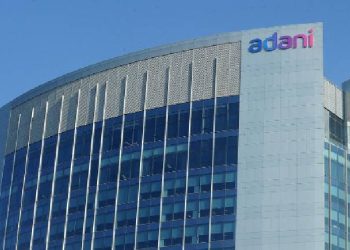New Delhi: The Indian telecom industry has been at the heart of the technology driven disruption over the last decade. With over 986 million active wireless subscribers, the industry has an opportunity to also drive transformation for businesses across industries.
IANS spoke to Dr Sanjeev Chaube, EVP and Head, Big Data & Advanced Analytics at Vodafone Idea to get his insights on how Cloud has been at the core of their digital transformation and how they are leveraging intelligent technologies such as artificial intelligence (AI), machine learning (ML), Internet of Things (IoT) and analytics.
Dr Chaube believes that there is a critical need for telecom service providers to transform from ‘Telco to Techno’ and technologies such as 5G, Artificial Intelligence, Big Data Analytics, Cloud Computing, IoT / IIoT / AIoT, and Robotic Process Automation (RPA) will enable this digital transformation.
Excerpts from the interview below:
Q: What are the key strategic pillars of digital transformation at Indian Telcos as you look to transform from a connectivity provider to an orchestrator of value-added solutions that meet the needs of digitally-savvy, connected customers?
A: I believe businesses are fast turning to digital solutions to empower remote workforces, provide customers with better services, and create an immersive experience with increased visibility, resilience & agility. Moreover the need for eliminating traditional, hardware driven, and large expensive physical operations has been at the core of Digital Transformation worldwide across industries.
We need to understand that any transformation starts with data. Hence, a company captures customer data efficiently and leverages it to make smarter decisions. Goal should be to streamline key customer touchpoints to increase spends & reduce efforts.
The employees need to be well informed with relevant data, data driven decisioning culture, access to learning & development platforms empowering better organisational transformation.
Businesses need to shift from IT departments to consolidated enterprise platforms that can absorb & integrate latest technologies instantly. Datasets, processes, web and apps should be shared across the company and the data needs to be integrated to provide a single source of truth by building appropriate Data Lake, Data Warehouses/Marts over Cloud for massive storage & processing capacities.
There are wide range of technology stack for Data Engineering & Analytics such as Hadoop Ecosystem, AWS Cloud, HBase, Cassandra, MongoDB, Teradata, Exadata, Druid, Spark, Kafka, Python, SAS, SPSS etc. are available. Also effective digital transformation enablement requires mobile app development frameworks & technologies for cross-platform app development such as React Native, Ionic Framework, Node, Xamarin, NativeScript, and Flutter, etc.
However, the choice of technology stack whether Open-Source or Proprietary depends primarily on the Value vs Cost proposition. Also, the need for scope, scale, speed, quality & ease form the basis for finalising the tech stack.
Ensuring near Real-time Customer 360 view in form of Business Intelligence Reports and Dashboard for leadership and at different levels of management ensure better & contextual decision making.
Therefore, in my opinion, the key pillars and ingredients for effective Intelligent Digital Transformation Program are a) Artificial Intelligence/Machine Learning & Data Science for Data Driven Decision Making, b) Customer Relevance & Centricity Business Processes, c) Engage & Empower Employees aligned around customer, d) Digital First Strategy with leanest possible technology stack, e) Bring Speed, Scale, Simplicity & Values with Platform, f) Enhance Personalization and g) Single Source of Truth & Data Engineering
Q: How are you using Big Data, Advanced Analytics, Artificial Intelligence/Machine learning & Data Science to understand and cater to the needs of your customers better?
A: Big Data and Advanced Analytics is extensively adopted to improve customers experiences and business performance. Artificial Intelligence & Data Science techniques especially Machine/Deep Learning algorithms are significantly improving some of the crucial areas/services including Customer Segmentation, Targeted marketing, Personalised offerings & recommendations, Churn Prediction, Product development, Predictive Analytics, Call Drop Analysis, reducing fraud, Price optimization, Network experience optimization, Location based services etc.
Over the next five years, rise in mobile-phone penetration and decline in data costs will add 500 million new Internet users in India, creating opportunities for new businesses. Legacy data sets were all structured in nature, however over the last few years, with the explosion of data, unstructured data is gaining equal or more importance in the market. With the advent of 5G technology, the available data from voice, video, social media, messaging, IOT and all new 5G use case deployments are going to increase multifold from hereon.
This Big Data generated by telco’s has all the features like massive volume, variety, velocity & veracity. It therefore becomes very critical for us to first organise and systematically store the data emerging from multiple applications within Data Ocean, Datalake, Data Warehouse /Data Marts be it using Cloudera Hadoop Ecosystem or Cloud infrastructure.
Secondly, this Big Data is then used to perform Data Analytics for decision making at different organisational levels from operations and strategy making perspective. All 5 stages of Data Science and Advanced Analytics lifecycle namely Descriptive, Diagnostic, Predictive, Prescriptive and Pre-Emptive Analytics are performed to extract information and patterns.
Machine learning use cases have great potential & value such as assisting with Customer Acquisition, Retention, Digital Engagement, Anomaly Detection, Root Cause Analysis, Predictive Maintenance, Ticket Classification, SLA Assurance and building intelligent networks with features like Self-Healing, Dynamic Optimization & Automated Network Designs. However, in order to work effectively, they require specific computational, pipeline and support infrastructure as well to support massive data & their parallel processing.
Predictive models whether Real-time or Batch processing basis business requirements leveraging structured data feeds such as demographic, usage, billing etc. or Unstructured data feeds like Chat, Text, Images, Video feeds are built to support business with insights beforehand.
Social media analytics is performed using Computer Vision, Natural Language Processing (NLP) & Text parsing techniques etc. to extract sentiments of customers across the country for decision making. Different Deep Learning Architectures of Neural networks ranging from Convolutional Neural Network, Recurrent Neural Networks, Self-Organizing Maps, Auto encoders, etc. are used appropriately as per desired intent.
Q: What did cloud technology allow you to do that you couldn’t do before?
A: Cloud is a key enabler of Large-Scale Transformation: be it benefitting Consumer Analytics, Digital Adoption, and Network Monitoring & Management and bringing efficiency in Operations by facilitating faster decisions at scale and speed.
As on date, we are India’s first Telco to build a full-fledged Big Data AI/ML Cloud Advanced Analytics Platform on AWS Cloud.
Before embarking on our cloud journey, our data sets were collected in silos across the country. Then, they were aggregated to run the various machine learning & deep learning algorithms.
Also, as the data sets were huge in volume, the available compute & GPU support for data consolidation in the legacy infrastructure was a challenge. All of these complexities added delays to our operations & hampered the productivity of the teams. With the new data science platform deployed over AWS, we are able to address all of these challenges & achieve much more.
Using the compute & memory power available on cloud, we can consolidate data & effectively run our machine / deep learning algorithms & also do parallel data processing with ease. The time to run these algorithms have already reduced by over 60 per cent, and with further optimization, we expect our data science platform to deliver more in the near future.
Additionally, availability of deep learning frameworks like Tensor flow, MXNet, Keras, Pytorch, Gluon, etc. along with pre-trained ML models as APIs help us experiment more with data sets, at scale & speed & eventually in turn improve our customer experience. This feature rich data science platform with its scalability, elasticity & pay-as-you-go commercial model helps consolidate operations & effectively manage costs.
In the future, we’ll be able to integrate & effectively use this platform to address our challenges across new technology initiatives including 5G, Edge, IoT monetization, customer 360, Network Function Virtualization transition & so on.
Q: What are your views on the rapid worldwide progress in AIoT & IIoT Analytics for Connected Intelligence with Cloud Technologies?
A: As per Fortune Business Insights, global IoT market size is projected to grow from USD 381.30 billion in 2021 to USD 1854.76 billion in 2028. While if we follow Researchandmarkets report, globally the AIoT market itself will reach $78.3 Billion by 2026. Also, the Global IIoT market which was valued at about $216.13 in 2020 and is expected to grow to about $1.1 trillion by 2028.
The above data clearly sets the roadmap and vision for telecom as a connectivity service provider not only for India but telco’s globally.
The use of AI for decision making in IoT and data analytics will be crucial for efficient and effective smart city solutions in terms of decision making. This is in line with the Indian government’s plan to develop 100 smart city projects including smart airports, smart railway stations, smart public healthcare services etc., where the 5G, AI, IoT & Cloud technologies will play a vital role in developing these cities & services.
The convergence of AI and Internet of Things (IoT) technologies and solutions (AIoT) is leading to “thinking” networks and systems. The AI-enabled edge device market will be the fastest-growing segment within the AIoT. AIoT automates data processing systems, converting raw IoT data into useful information.
AIoT solutions are the precursor to next-generation AI Decision as a Service (AIDaaS). With AIoT, AI is embedded into infrastructure components, such as programs, chipsets and edge computing, all interconnected with IoT networks. APIs are then used to extend interoperability between components at the device level, software level and platform level. These units will focus primarily on optimising system and network operations as well as extracting value from data.
These solutions will provide customer’s ability to acquire leading wireless enabled AIoT products and reduce their time to market.
The key areas of AIoT solutions include Data Services, Predictive Asset Management, Intelligent Immersive Experience, Process Improvement, Next-Gen UI & UX and Intelligent Industrial Automation.
This Intelligent connectivity, Big Data & AI/ML technologies are expected to play a major role in key industrial areas such as Agricultural Productivity, Automotive, Transportation & logistics, Industrial & manufacturing operations, Healthcare, Public safety, and security.
Leveraged with AWS IoT Cloud services to collect, organise and analyse data from industrial & publicly installed sensors & devices at scale and for near real-time decision making, AIoT enables industries to seamlessly manage and control actions across the edge and cloud.
The key components for Artificial Intelligence + IoT (AIoT) Analytics consist of Sensors, IoT Gateway, Network, Storage & Analytics Engine for Data Analysis, Monitoring and Intelligent Automation for actions & notifications at the Edge.
Artificial Intelligence & Machine learning algorithms are leverage both at Cloud & Edge over emerging data from IoT sensors such as Visual/Optical Sensors, Temperature Sensors, Pressure Sensors, Infrared Sensors, Gas, Gyroscope Sensors, Accelerometers, Humidity Sensors, Level Sensors etc. to derive descriptive & predictive insights for effective & real-time monitoring, notifications and action fulfilment.
(IANS)


















